Walther DMKZ
First, some pictures:
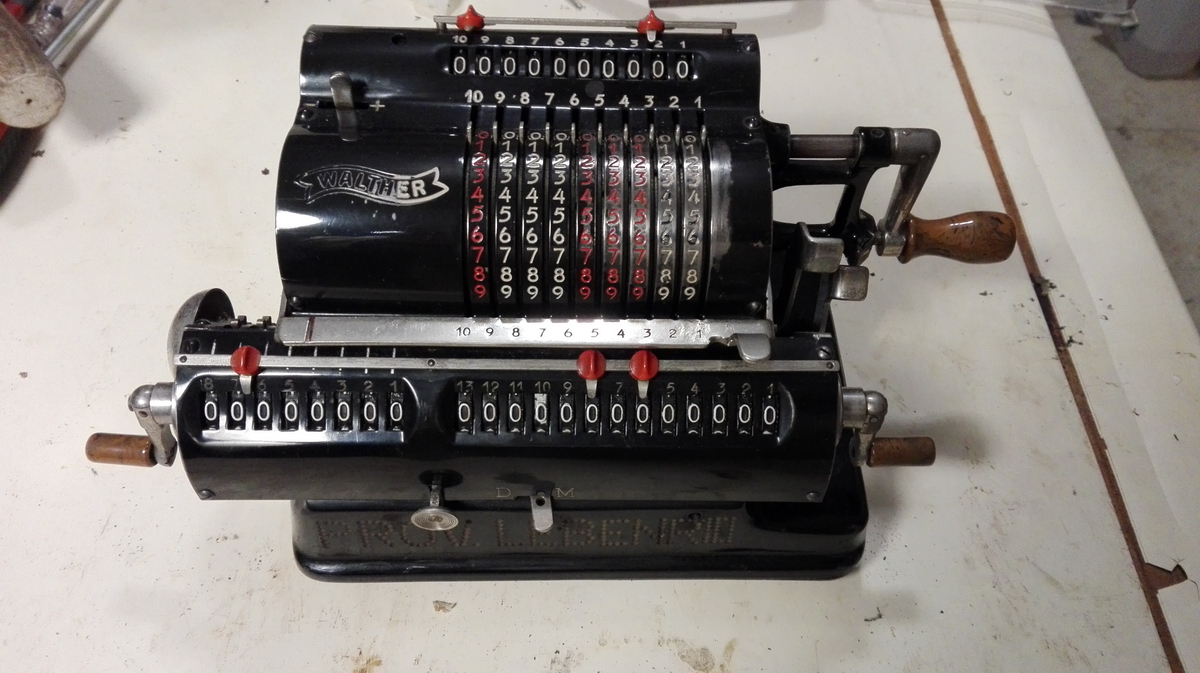
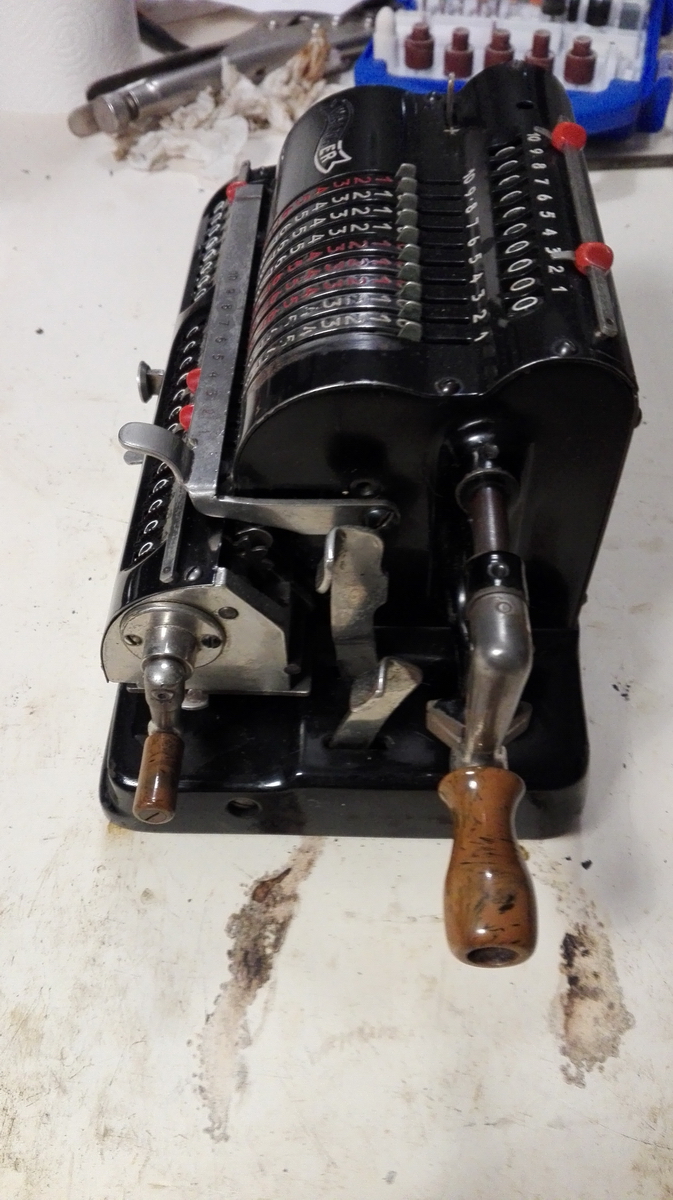

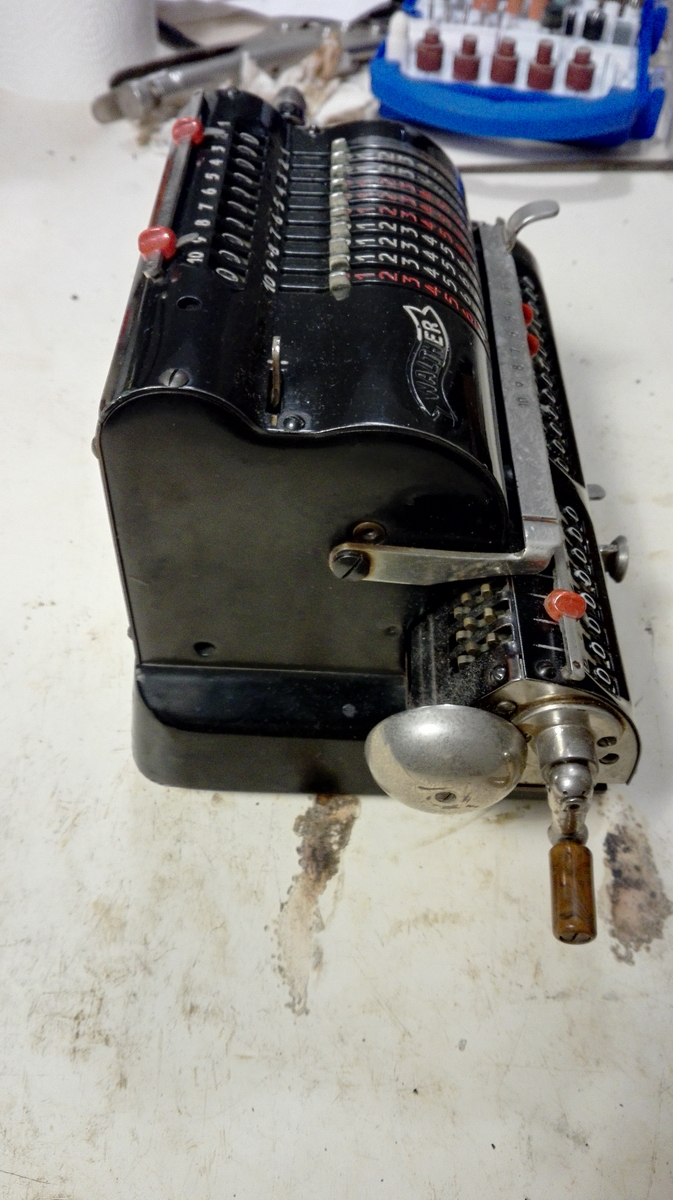
The previous owner made it very clear to whom the machine belonged, by drilling their name in giant letters across the front of the machine!
Now, what is all the hubbub about? This is possibly one of the rarest and hardest to find Walthers. The machine is not part of my collection, but is owned by the Arithmeum, and ended up on my table because it blocked and malfunctioned. I was very curious to see what the solution was that Walther implemented for automatic division, because this machine type never seemed popular, judging by the number of RMKZ machines that were sold and can be found today, in comparison with this, the DMKZ.
In order to understand the automatic division, it is first necessary to look at the tens' carry in the revolution register. The +/- button is manual and operates a tilting disk at the left end of the pinwheel cylinder which has a counting tooth, that by means of an eccentric on the main axle passes the counter register gear in positive direction when the disk is tilted one way, and in negative direction if it is tilted the other way.
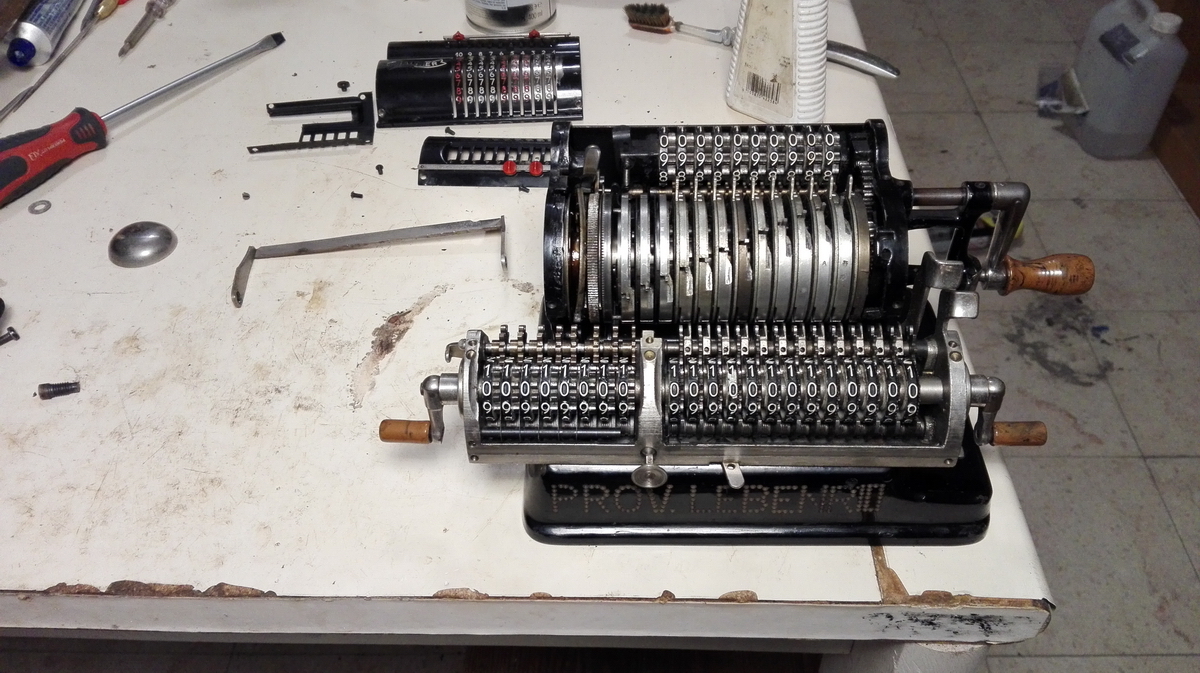
The tens' carry itself is the same as in all the other Walthers with "Z" in the name, but it is still quite ingenious. I didn't go into detail about the revolution counter on my SMKZ. Every counter register wheel has ten gear teeth on the right, as usual, but also a narrow metal disk with a single tooth on the left. The intermediate gears which operate the counter register are quite wide, and are loose on the axle, so they can shift left to right. They are held into position to the right by a small spring loaded metal fork. If a counter wheel is carried past nine to zero, the tooth on the left engages with the left intermediate gear, which is sitting in its rightmost position, together with the righthand 10-toothed gear of the next counter wheel. Hence they move together from 09 to 10.

Obviously it must be possible to switch off this system, because we only want to carry tens forward, not backwards from where we are counting. A protrusion on the base of the machine operates the small levers at the back of the carriage, so that the intermediate gear of the counter wheel which is currently counting is shifted to the left, so it engages with the counter wheel itself only, and not with the tens' carry tooth of the gear of lower order. Smart!
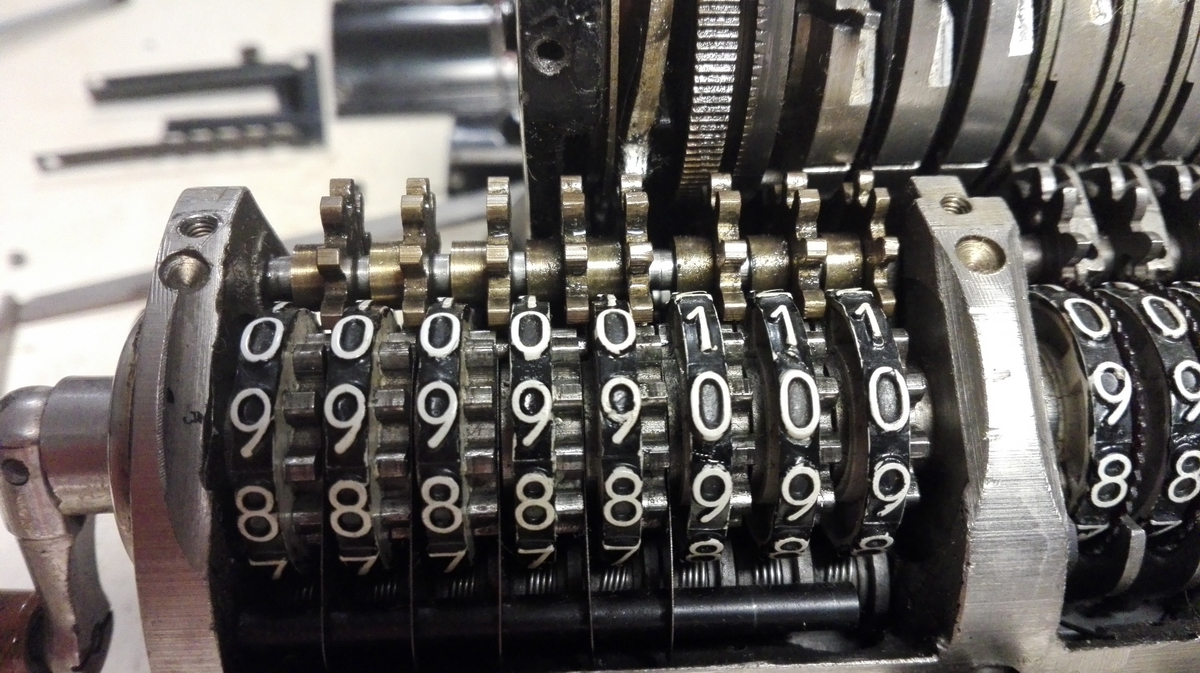
Here is a video to make it a little more clear:
Now, knowing this, what does this inconspicuous little "M vs. D" lever at the front of the carriage do ? The carriage is moved by two levers in front of the main crank. One lever will release a catch, by which the spring loaded carriage will jump one position to the left. The other lever will push the carriage to the right by a system of levers, against the spring force. All the little "M/D" switch does is to couple the operation of the bell when a tens' carry occurs at the end of the result register (i.e., overflow or underflow condition), to the operation of the catch under the carriage. If a carry occurs to the end of the register, then the spring-loaded carriage automatically tabs left. Here's a video of the process:
This is the same system the Hamann-Manus uses, with the important disctinction that the Hamann Manus is not a pinwheel machine, but a geared sector, and can thus automatically switch the direction the result register counts in by moving the carriage slightly to the side. Automatic division in the Walther, which is a pinwheel machine and thus needs the direction of the crank reversed to add instead of subtract, can rather be called "semi-automatic" - One starts to subtract, and when an underflow occurs the carriage tabs left and the bell rings, upon which the user needs to reverse the direction (s)he is cranking in, until an overflow occurs, the carriage shifts and the bell rings, and the direction needs to be changed again, alternating directions until you run out of counter register, which will display the quotient. If you crank up and down a few times at the end to judge how far over or under 0 you are, you can also round the final digit correctly.
Mechanically, this was very simple to organize, probably with three or four extra parts and a few springs - so the question remains why so few of these machines were sold. Were they much more expensive, which was then just greedy of the Walther firm, or did really no-one see the value in this technique even for a small extra fee ? One has to wonder.
This video finally demonstrates how division takes place: ...so we can rest safely in the knowledge that 1/pi is still about 0.31831015 !
